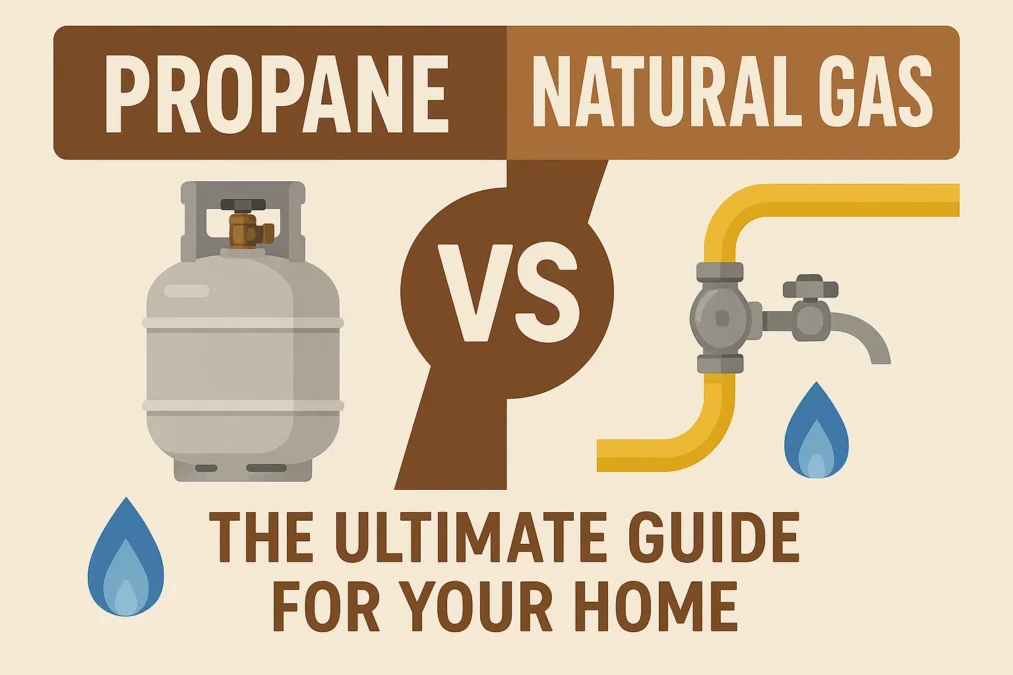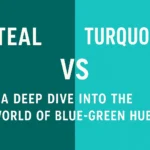Choosing the right energy source for your home is a big decision. It impacts your monthly bills, your cooking experience, the comfort of your home, and even your property’s value. For many homeowners, the debate inevitably narrows down to two powerful contenders: propane and natural gas. While they might seem similar flickering beneath your pots or warming your living room, they are fundamentally different in where they come from, how they get to you, and how they perform. Understanding the core differences between propane and natural gas is the first step to making an informed choice that aligns with your budget, your location, and your lifestyle. This comprehensive guide will dive deep into every aspect of the propane vs natural gas discussion, providing you with the clarity you need.
What Exactly Are Propane and Natural Gas?
Before we can compare them, it’s crucial to understand what each fuel is at a molecular level. This isn’t just chemistry for the sake of it; these fundamental differences explain why they behave so differently in your appliances.
Natural gas is a fossil fuel that is primarily composed of methane (CH4), a simple molecule consisting of one carbon atom and four hydrogen atoms. It is found deep underground, often in reservoirs near other fossil fuels like oil and coal. In its raw form, natural gas is odorless, colorless, and tasteless. For safety reasons, utility companies add a substance called mercaptan, which gives it that distinctive “rotten egg” smell, making leaks easy to detect. It is delivered to homes through an extensive network of underground pipelines. If you don’t have a pipeline running to your neighborhood, you likely don’t have access to natural gas.
Propane, on the other hand, is a byproduct. It is created during both natural gas processing and crude oil refining. Known as liquefied petroleum gas (LPG), propane is a hydrocarbon (C3H8). Under normal atmospheric pressure, it exists as a gas. However, it can be easily compressed into a liquid form for storage and transport. This liquid form is what you’ll find in the large tanks next to rural homes or the familiar 20-pound cylinders you hook up to your barbecue grill. This portability is its superpower, making it available virtually anywhere, regardless of pipeline infrastructure.
Energy Efficiency and Performance Face-Off
When you turn on your stove or your furnace, you want power and you want it efficiently. This is where the battle of liquid propane vs natural gas gets interesting, as one packs a significantly bigger punch by volume.
Propane contains more than twice the energy per unit than natural gas. Measured in British Thermal Units (BTUs), one cubic foot of propane provides about 2,516 BTUs, while one cubic foot of natural gas provides only about 1,030 BTUs. What does this mean for you in practical terms? An appliance burning propane will produce more heat energy than one burning natural gas in the same amount of time. A propane furnace will heat your home faster, a propane water heater will recover more quickly, and a propane vs natural gas stove will provide instant, high-heat searing capabilities that chefs love.
However, this doesn’t automatically mean propane is the more efficient choice overall. Efficiency also depends on the appliance itself. Modern high-efficiency furnaces and water heaters for both fuels are designed to extract the maximum amount of heat from the combustion process. But all else being equal, the higher energy density of propane often means you’ll use less fuel to accomplish the same task compared to natural gas. This raw performance advantage is a key reason many people prefer a propane vs natural gas grill for achieving that perfect, high-temperature sear on a steak.
The Great Cost Debate: Breaking Down the Numbers
The question of propane vs natural gas cost is arguably the most complex part of the decision, as it’s rarely a simple apples-to-apples comparison. The cost of propane vs natural gas fluctuates based on geography, market conditions, and how you purchase it.
Natural gas is generally less expensive per BTU than propane. Because it is delivered via pipeline, the infrastructure costs are largely borne by the utility company, and the fuel itself is often abundant and cheap to extract. Your bill is typically a straightforward monthly charge based on how much you use (in thermos or cubic feet). This predictability and generally lower price point make it an attractive option for homeowners connected to the grid.
Propane cost is more variable. You are purchasing the fuel by the gallon, and the price can swing with the seasons (higher in winter due to demand) and with global oil and gas prices. If you own your tank, you can shop around for the best price. If you lease your tank from a provider, you might be locked into their pricing. Furthermore, you have to consider the delivery fee and the minimum delivery requirements. While the per-BTU cost of propane is higher, remember that its higher efficiency means you might use less of it. You have to run the numbers based on local rates to see which fuel offers a better long-term value for your specific home and usage patterns.
A Quick Cost Comparison Table
| Factor | Natural Gas | Propane |
|---|---|---|
| Energy Content | ~1,030 BTU/cubic foot | ~2,516 BTU/cubic foot |
| Typical Cost Unit | Therm (100,000 BTUs) | Gallon (91,500 BTUs) |
| Cost Volatility | Generally stable, regulated | More volatile, market-driven |
| Infrastructure | Pipeline (monthly service charge) | Tank (purchase/lease cost + delivery) |
| Availability | Limited to pipeline areas | Available everywhere |
Grilling Showdown: Propane vs Natural Gas Grill
For many, the backyard barbecue is the heart of the home, and the choice of fuel is a deeply personal one. The propane vs natural gas grill debate has passionate advocates on both sides.
A propane grill is the king of flexibility and portability. You can place your grill anywhere on your patio, deck, or even take it camping (with a smaller tank, of course). Lighting it is usually a simple matter of turning a knob and pushing an igniter. The high heat output of propane is excellent for searing meats and achieving a great char. The primary drawback is the need to monitor your fuel levels—there’s nothing worse than running out of gas in the middle of cooking a large meal for guests.
A natural gas grill is the epitome of convenience and endless fuel. Once it’s professionally installed and hooked up to your home’s gas line, you never have to worry about running out of fuel or swapping tanks again. You can grill to your heart’s content without a second thought. It’s also generally cheaper to operate per grilling session due to the lower cost of natural gas. The obvious downside is that the grill is permanently fixed in place, limiting your ability to rearrange your outdoor space. For those who love to entertain and grill frequently, the set-it-and-forget-it nature of a natural gas line is a huge benefit.
Cooking in the Kitchen: Propane vs Natural Gas Stove
The kitchen is another arena where the fuels are put to the test. Professional chefs overwhelmingly prefer gas stoves for their immediate control and responsive heat. But is one gas better than the other?
A propane vs natural gas stove discussion often centers on heat output. As established, propane burns hotter than natural gas. This means a propane flame can bring a pot of water to a boil slightly faster and can provide a more intense, concentrated heat for wok frying or searing. The flame of a propane burner is also a bit sharper and more defined.
Natural gas burns a little cooler and with a softer, more diffuse flame. Some cooks prefer this for tasks that require more gentle, even heating, like simmering sauces or melting chocolate. The practical difference for most home cooks, however, is minimal. Modern stoves are designed and calibrated for their specific fuel type. The burners, orifices, and regulators are all set up to provide optimal performance, so you likely wouldn’t notice a dramatic difference in everyday cooking unless you switched the fuels on the same unadjusted appliance (which is dangerous and should never be done!). The real choice in the kitchen is often less about the fuel itself and more about whether you have the necessary hookup.
Environmental Impact and Sustainability
Today’s homeowners are increasingly considering the environmental footprint of their energy choices. Both fuels are fossil fuels and are considered clean-burning compared to coal or oil, but there are distinctions.
Natural gas, primarily methane, is a potent greenhouse gas itself. Leaks from pipelines and wells during extraction and transportation can significantly offset its clean-burning benefits at the point of use. While combustion produces less carbon dioxide than propane per unit of energy, the potential for methane leakage is a serious environmental concern that the industry is working to address.
Propane is not a greenhouse gas before combustion and is non-toxic. It poses no threat to soil or water if leaked, as it simply vaporizes into the air. It burns very cleanly, producing less than half the greenhouse gas emissions of electricity generated from the grid (in many areas) and significantly less than gasoline. Furthermore, the emergence of renewable propane—a byproduct of the renewable diesel and sustainable aviation fuel production process—is a promising development. This fuel is chemically identical to conventional propane but is made from sustainable feedstocks like used cooking oil, animal fats, and biomass, offering a path to a carbon-neutral future for propane users.
Installation, Storage, and Delivery Logistics
How these fuels arrive at your home is a major practical consideration that affects upfront cost, convenience, and even your property’s aesthetics.
Natural gas requires a connection to a municipal pipeline. If your home is already equipped with gas lines, you’re good to go. If not, having a line extended to your property can be prohibitively expensive, if it’s even possible. The installation of appliances must be done by a licensed professional to ensure safety and code compliance. The utility company owns and maintains the infrastructure up to your meter, and you are responsible for the lines within your home.
Propane requires the installation of a storage tank on your property. Tanks can be placed above or below ground. You can either lease a tank from your propane supplier or purchase one outright. Owning your tank gives you the freedom to shop for the best fuel prices, while leasing often comes with service benefits and priority delivery. The tank needs to be periodically refilled by a delivery truck, which means you need to keep an eye on your fuel gauge and schedule deliveries, especially before the high-demand winter season. The pipes running from the tank to your home are your responsibility.
Safety Considerations for Homeowners
Both propane and natural gas are safe when handled correctly and when appliances are properly maintained. However, their different properties necessitate unique safety protocols.
Because natural gas is lighter than air, if a leak occurs indoors, it will rise and dissipate towards the ceiling and potentially through vents. This can reduce the risk of concentration at ground level but can also make it harder to detect without a monitor. The added odorant is your first line of defense.
Propane is heavier than air. In the event of a leak, it will sink and collect in low-lying areas like basements, crawl spaces, and along floors. This can create a dangerous concentration of gas if the area is not well-ventilated. This is why propane tanks are never stored inside a home or garage. The same strong odorant is added to propane for leak detection. It is also mandatory to have a propane gas detector in any home that uses the fuel, installed at floor level.
For both systems, annual inspections by a qualified technician, ensuring adequate ventilation for appliances, and knowing how to shut off the gas supply (at the meter for natural gas, at the tank for propane) are critical safety practices.
The Verdict: Which One is Right For You?
So, after weighing all these factors, how do you choose? The decision between propane and natural gas is less about which one is objectively “better” and more about which one is better for your specific situation.
Choose Natural Gas if: You live in an urban or suburban area where pipeline infrastructure is already available. Your primary concern is low, stable fuel costs and the ultimate convenience of never scheduling a delivery. You don’t want a storage tank on your property and prefer the simplicity of a monthly utility bill.
Choose Propane if: You live in a rural area beyond the reach of natural gas lines. You value high performance and efficiency in your appliances and are willing to manage your fuel supply. You want the flexibility to place appliances like grills anywhere and the potential to use a renewable, carbon-neutral fuel source in the future.
For many, the choice is made by simple geography. But for those on the line, it becomes a balance of upfront costs, long-term expenses, performance desires, and personal preference for convenience versus independence.
Mace vs Pepper Spray Which is Better for Self-Defense?
Conclusion
The journey through the world of propane vs natural gas reveals that both are exceptional energy sources with their own unique strengths and trade-offs. Natural gas offers unparalleled convenience and lower operating costs for those connected to the grid, making it a fantastic default choice. Propane, with its high energy output, portability, and widespread availability, provides powerful and efficient energy independence for homes anywhere. It often wins in a direct propane vs natural gas grill or stove performance test due to its higher BTU content. There is no single winner in the debate of propane vs natural gas cost; it requires a localized and personalized analysis. By carefully considering the factors of cost, efficiency, availability, environmental impact, and safety, you can confidently select the fuel that best powers your home, your kitchen, and your lifestyle for years to come.
Frequently Asked Questions (FAQ)
What is the main difference between propane and natural gas?
The main difference lies in their origin, storage, and delivery. Natural gas (methane) is delivered via pipeline and is lighter than air. Propane is delivered and stored in liquid form in tanks, is heavier than air, and contains over twice the energy per cubic foot, making it more efficient.
Can I convert my appliances from propane to natural gas or vice versa?
Yes, but it is not a DIY project. Converting an appliance requires a certified technician to change the orifices (jets), regulators, and sometimes even the burners to account for the different gas pressures and BTU outputs. Using an appliance with the wrong gas type is extremely dangerous.
Is propane more expensive than natural gas?
Typically, yes, the cost per BTU of propane is higher than that of natural gas. However, because propane is more energy-dense and efficient, you may use less of it, which can partially offset the higher price. The final comparison depends heavily on local utility and propane delivery rates.
Which is safer for home use: propane or natural gas?
Both are very safe when systems are properly installed and maintained. Their different properties require different safety measures. Natural gas rises and dissipates, while propane sinks and pools. This makes propane detectors installed low to the floor crucial for propane homes. Both gases have odorants added to help detect leaks.
Why would someone choose propane if natural gas is cheaper?
The primary reason is availability. Millions of homes are not connected to a natural gas pipeline, making propane their best gas option. Others choose propane for its higher efficiency, greater appliance performance (especially for grilling), or because they prefer to own their fuel supply and have the option to shop for prices.



